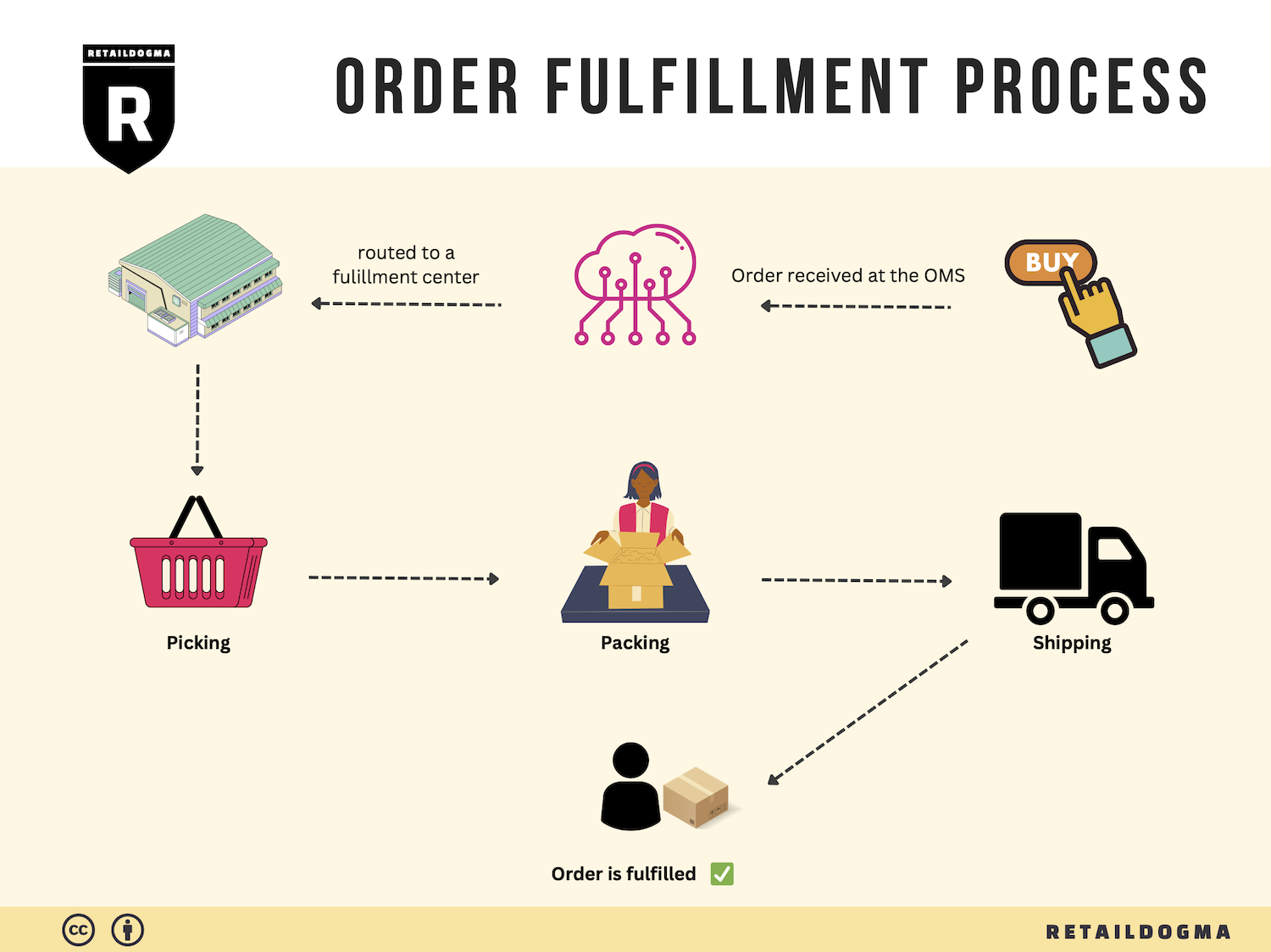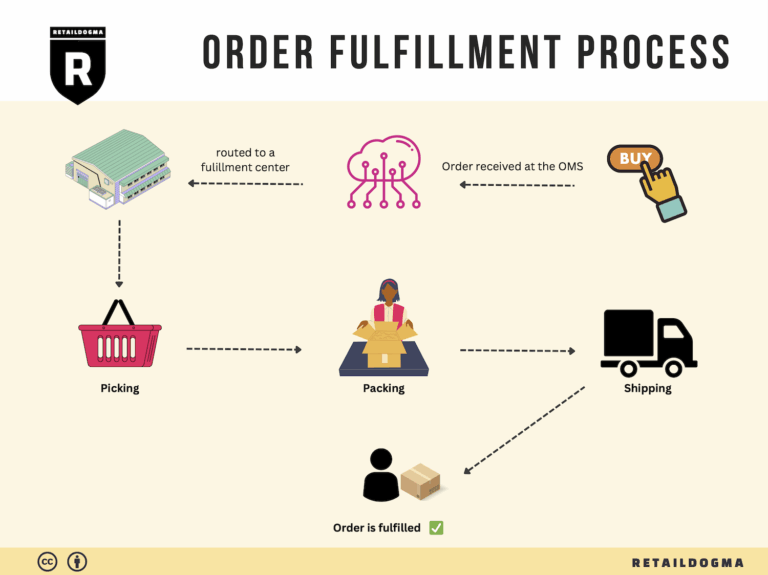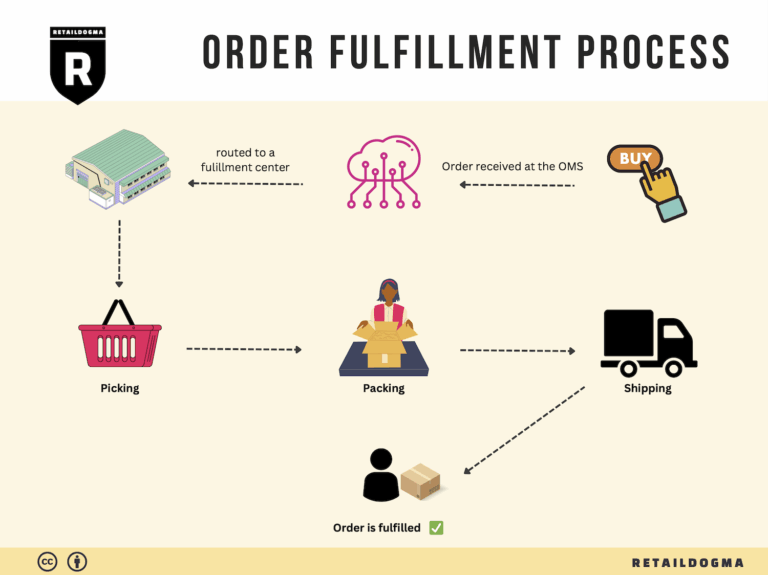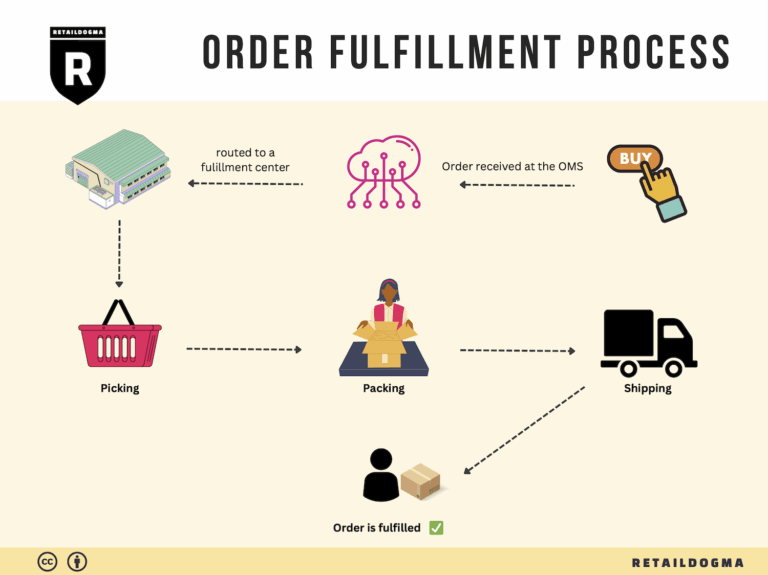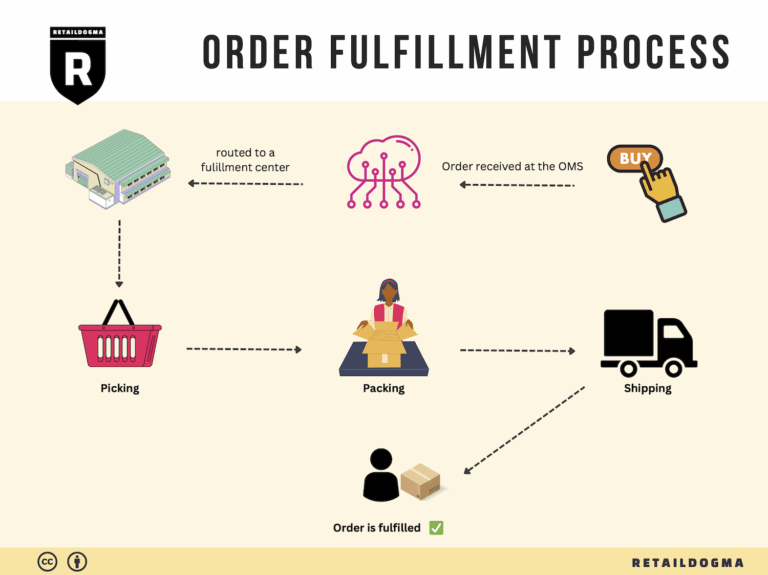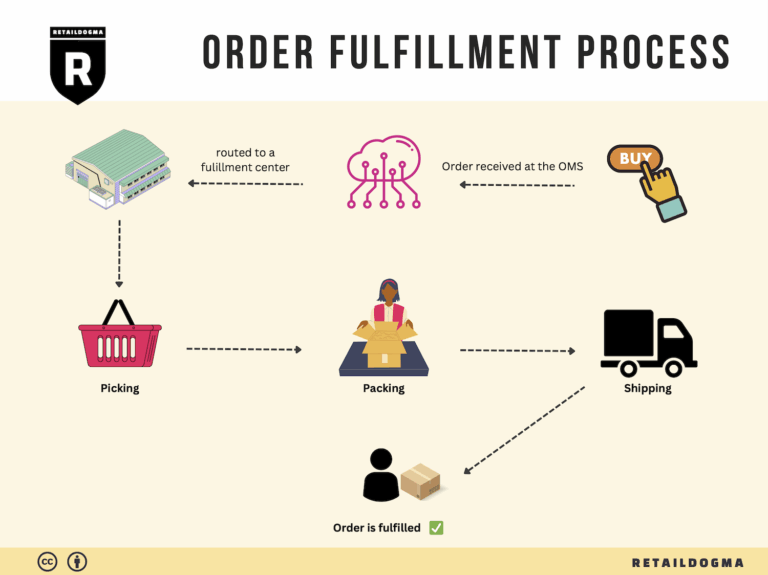Ecommerce Fulfillment Services: The Ultimate Guide (2025)
What is E-commerce Fulfillment? An Introduction for Growing Businesses
Understanding the Fulfillment Process
As your e-commerce business begins to grow, the excitement of increasing sales can quickly become overshadowed by the overwhelming task of packing and shipping orders. Many entrepreneurs find themselves buried in boxes, tape, and packing materials, struggling to keep up with demand while trying to provide an excellent customer experience. This is where e-commerce fulfillment comes into play. Simply put, fulfillment is the process of getting a product from your inventory into the hands of your customers.
For many growing online businesses, effective fulfillment is crucial not only for maintaining customer satisfaction but also for scaling operations efficiently. In this guide, we will explore various aspects of e-commerce fulfillment to help you navigate this essential component of your business.
Key Topics Covered
-
Different Fulfillment Models: We will discuss various fulfillment options available to e-commerce businesses, including Third-Party Logistics (3PL) and Fulfillment by Amazon (FBA). Understanding these models will help you determine which approach aligns best with your operational needs and growth objectives.
-
Core Fulfillment Services: We’ll break down the essential services that fulfillment partners typically offer, such as inventory management, order processing, pick and pack services, shipping, and returns management. Knowing what services are available will empower you to choose a provider that meets your specific requirements.
-
Choosing the Right Partner: Selecting a fulfillment partner can be a daunting task. This guide will provide practical tips on what to look for in a fulfillment service, including factors like reliability, technology integration, and customer support, ensuring you make an informed choice.
-
Understanding Pricing: Fulfillment costs can vary widely depending on the services you require. We will discuss the typical pricing structures and what to expect, helping you budget effectively as you scale your business.
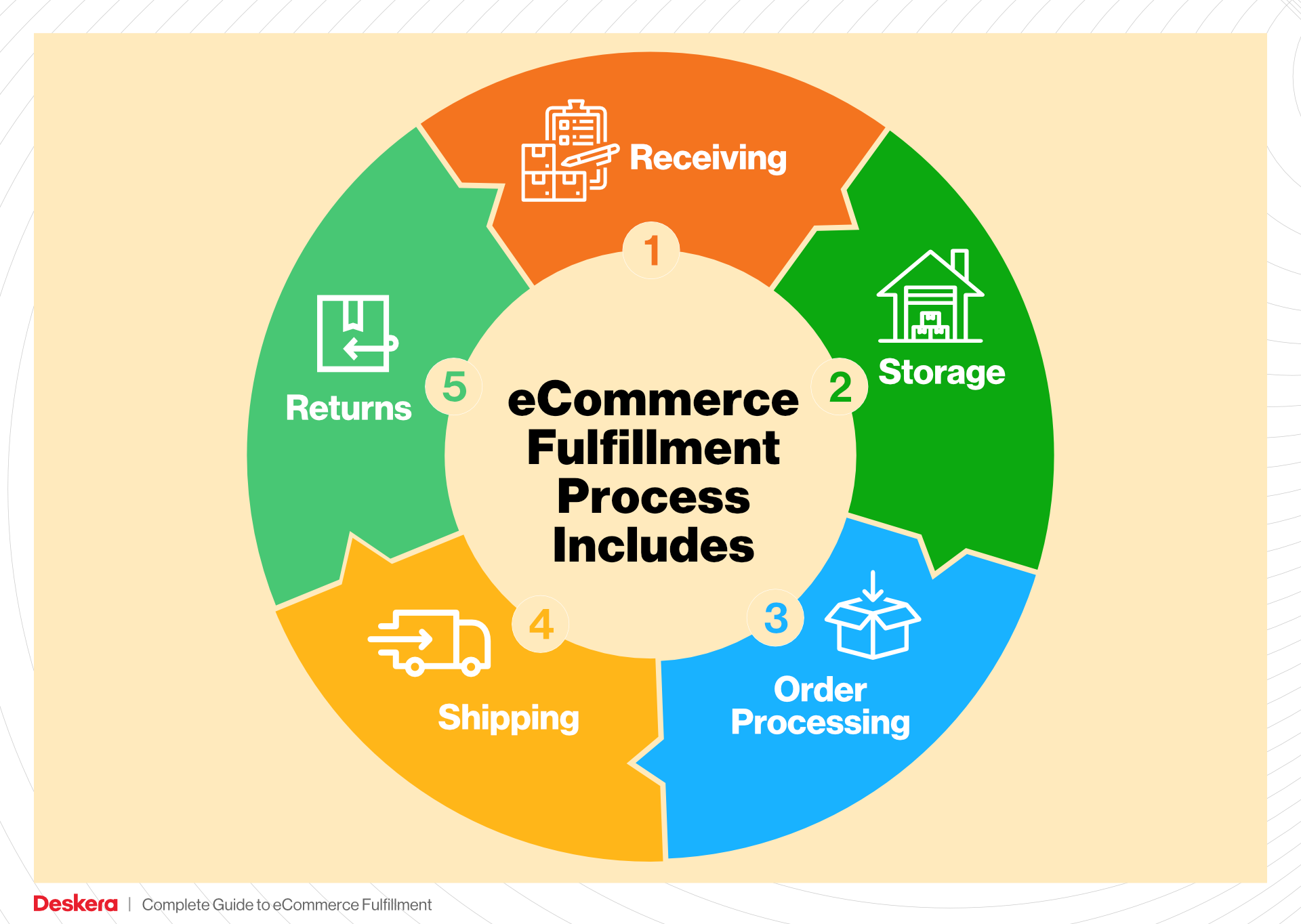
Empowering Your Business Decisions
Our goal is to empower you with the knowledge needed to make smart decisions about your logistics. By understanding the intricacies of e-commerce fulfillment, you can streamline your operations, reduce stress, and focus on what truly matters: growing your business and delighting your customers. Whether you’re just starting out or looking to optimize your existing processes, this guide will serve as a valuable resource on your fulfillment journey.
What You’ll Learn In This Guide
- What is E-commerce Fulfillment? An Introduction for Growing Businesses
- The Order Fulfillment Process: From ‘Buy’ Button to Customer’s Door
- Comparing Fulfillment Models: In-House vs. 3PL vs. Dropshipping
- A Deep Dive into Amazon FBA: Pros, Cons, and Who It’s For
- Core Services Offered by Fulfillment Centers
- How to Choose a Fulfillment Partner: A 6-Point Checklist
- Understanding Fulfillment Pricing: A Breakdown of Common Fees
- Frequently Asked Questions (FAQs) about Fulfillment
- Conclusion: Is Outsourcing Fulfillment the Right Move for Your Business?
- Important Disclaimer
The Order Fulfillment Process: From ‘Buy’ Button to Customer’s Door
1. Receiving Inventory
The order fulfillment process begins with the receiving of inventory. When new stock arrives at the fulfillment center, it undergoes a thorough inspection to verify the quantity and quality against the purchase order. This step is crucial for maintaining accurate inventory levels and ensuring that the products meet quality standards before they are stored.
Importance: Accurate receiving is vital to avoid stock discrepancies that can lead to fulfillment errors, which ultimately affect customer satisfaction. Any discrepancies at this stage can cascade through the entire order fulfillment process, leading to delays and unhappy customers.
Key Term: SKU (Stock Keeping Unit) – Each product is assigned a unique SKU, which simplifies tracking and managing inventory levels. This unique identifier helps streamline the receiving process by allowing warehouse staff to quickly confirm that the correct items have been received.
2. Warehouse Storage
Once the inventory has been received and verified, the next step is warehouse storage. Products are organized and stored in designated locations within the fulfillment center, often using a systematic approach to maximize space and efficiency. The organization can be based on various strategies, such as by product type, size, or sales velocity.
Importance: Proper storage is essential for maintaining an efficient picking process. By categorizing and storing items logically, businesses can significantly reduce the time it takes to retrieve products for orders. Additionally, effective storage solutions can help prevent damage and loss, ensuring that products remain in sellable condition.
Key Term: Bin Location – Each item is assigned a specific bin location within the warehouse. This system allows for quick retrieval of items during the picking process and helps maintain inventory accuracy.
3. Order Picking
The order picking stage involves retrieving items from the warehouse to fulfill customer orders. Warehouse staff use a picking list, which details the items and quantities needed for each order. Various picking methods can be employed, such as single order picking, batch picking, or zone picking, depending on the volume and type of orders.
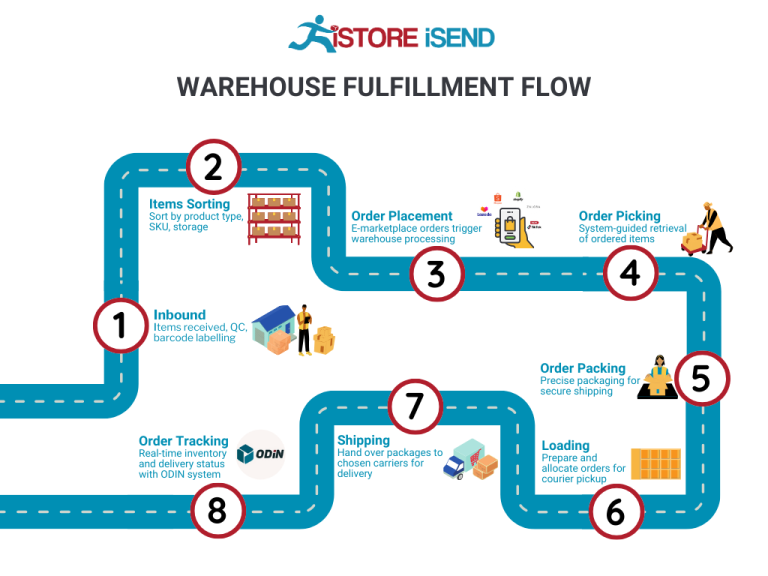
Importance: Efficient picking is crucial for meeting customer expectations regarding order accuracy and delivery speed. The faster and more accurately items are picked, the quicker orders can be processed and shipped. This directly impacts customer satisfaction and retention.
Key Term: Pick List – A document or digital list that outlines the items to be picked for each order. It serves as a guide for warehouse personnel, helping to ensure that all items are collected accurately.
4. Order Packing
After items have been picked, they move to the order packing stage. In this step, products are carefully packed into boxes or envelopes, often using protective materials to minimize damage during transit. The packing process may also include labeling and ensuring that the correct shipping information is attached.
Importance: Packing is a critical step that not only protects the product but also enhances the customer experience. Thoughtful packing can create memorable unboxing moments, reinforcing brand identity and customer loyalty. Additionally, accurate packing ensures that the correct items are shipped to the right addresses, reducing the likelihood of returns.
Key Term: Packing Slip – A document included in the package that outlines the items included in the shipment. This serves as a reference for customers and helps verify that they received the correct products.
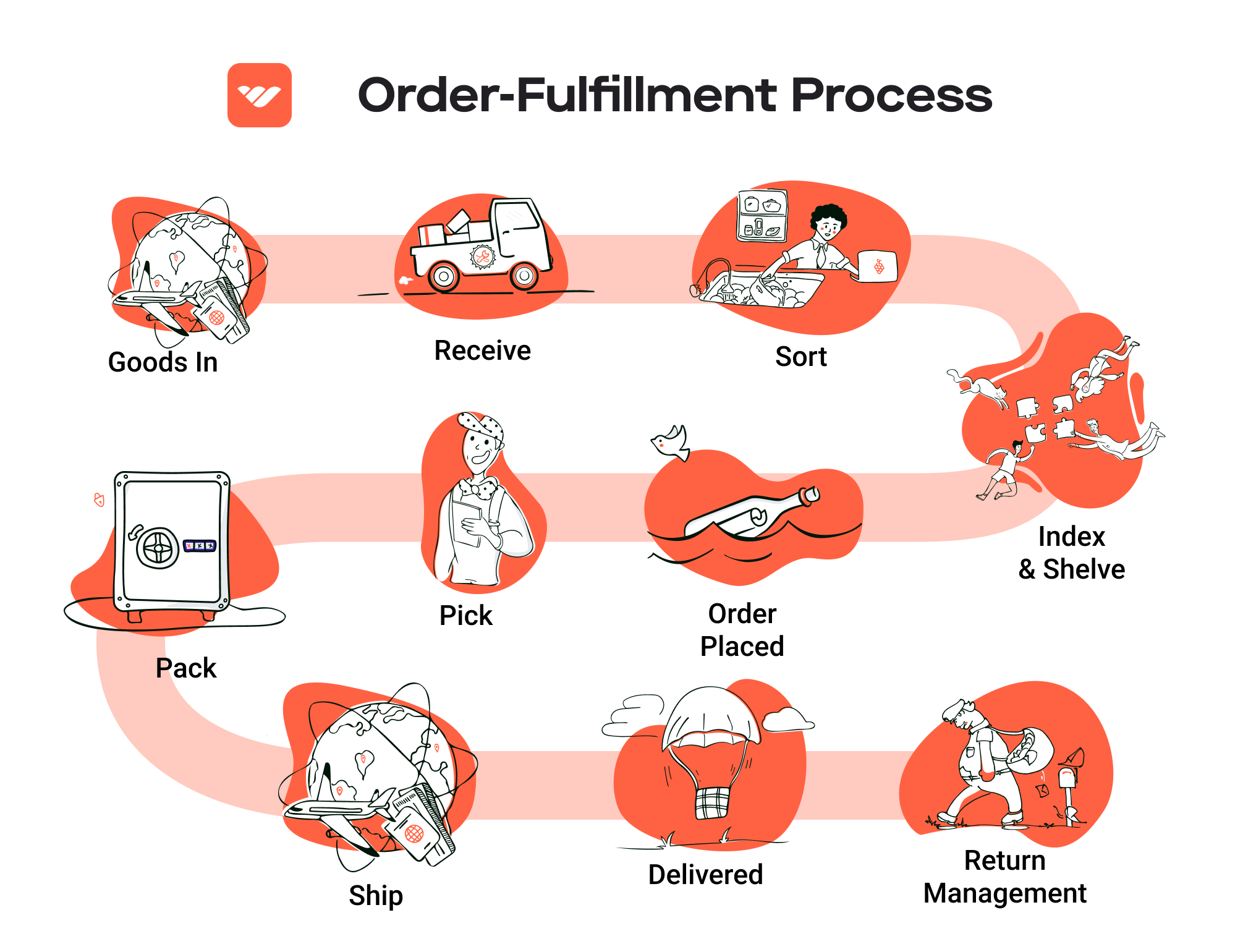
5. Shipping & Delivery
The final step in the order fulfillment process is shipping and delivery. Once packed, orders are handed over to shipping carriers for delivery. Businesses often partner with multiple shipping providers to offer various options for speed and cost-effectiveness. Tracking information is typically generated at this stage, allowing customers to monitor their orders in transit.
Importance: Timely shipping and delivery are paramount in e-commerce. Customers expect fast and reliable delivery, and meeting these expectations can significantly enhance customer satisfaction and loyalty. Additionally, effective shipping logistics can help minimize costs and improve overall profitability.
Key Term: Tracking Number – A unique identifier assigned to each shipment, enabling customers to track their order’s journey from the fulfillment center to their doorstep. This transparency builds trust and enhances the overall shopping experience.
By understanding and optimizing each step of the order fulfillment process, e-commerce businesses can streamline their operations, enhance customer satisfaction, and ultimately scale their logistics effectively.
Comparing Fulfillment Models: In-House vs. 3PL vs. Dropshipping
Fulfillment Model Comparison Table
| Model | Who Handles Inventory | Best For (Business Stage) | Key Advantage | Key Disadvantage |
|---|---|---|---|---|
| In-House Fulfillment | The business itself | Established businesses with stable demand | Greater control over inventory and fulfillment processes | High upfront costs and operational complexity |
| Third-Party Logistics (3PL) | Third-party fulfillment provider | Startups to mid-sized businesses scaling rapidly | Reduced overhead costs and access to expertise | Less control over inventory and fulfillment speed |
| Dropshipping | Suppliers | New entrepreneurs or niche markets | Low startup costs and minimal risk | Lower profit margins and less control over product quality |
In-House Fulfillment
In-house fulfillment involves managing all aspects of inventory and order processing within the business itself. This model is typically adopted by established companies with a stable demand for their products. One of the primary advantages of in-house fulfillment is the greater control it provides over inventory management, order accuracy, and customer experience. Businesses can customize their packaging and shipping processes to align closely with their brand identity, creating a unique unboxing experience for customers. However, this model comes with significant drawbacks, including high upfront costs for warehousing, staffing, and technology investments. Additionally, maintaining an in-house operation can lead to operational complexity, requiring dedicated resources to manage logistics efficiently. For businesses looking to scale, in-house fulfillment may limit flexibility and responsiveness to market changes.
Third-Party Logistics (3PL)
Third-party logistics (3PL) providers offer businesses the opportunity to outsource their inventory management and fulfillment operations. This model is ideal for startups and mid-sized businesses that are experiencing rapid growth but may not have the resources or expertise to handle logistics in-house. One of the key advantages of partnering with a 3PL is the reduction in overhead costs, as businesses can avoid the expenses associated with warehousing, staffing, and fulfillment technologies. Additionally, 3PL providers often have established relationships with shipping carriers, enabling them to negotiate better rates and provide faster shipping options. However, outsourcing fulfillment can lead to less control over inventory management and order processing, which may affect delivery times and product quality. Businesses must also ensure they choose a reliable 3PL partner to avoid potential disruptions in service that could impact customer satisfaction.
Dropshipping
Dropshipping is a fulfillment model where businesses sell products without holding any inventory. Instead, when a customer places an order, the retailer purchases the item from a third-party supplier who then ships it directly to the customer. This model is particularly well-suited for new entrepreneurs or businesses targeting niche markets, as it requires minimal upfront investment and allows for a flexible product offering. One of the primary advantages of dropshipping is the low financial risk involved; businesses do not need to invest in inventory upfront, reducing the chances of excess stock and unsold products. However, dropshipping has its downsides, including lower profit margins due to reliance on suppliers and less control over product quality and shipping times. Furthermore, businesses may face challenges in managing customer expectations if suppliers experience delays or stockouts. Overall, while dropshipping can be an attractive option for those starting out, it requires careful management to maintain customer satisfaction and brand integrity.
A Deep Dive into Amazon FBA: Pros, Cons, and Who It’s For
Understanding Fulfillment by Amazon (FBA)
Fulfillment by Amazon (FBA) is a service that allows e-commerce sellers to store their products in Amazon’s fulfillment centers. Amazon then takes care of storage, packaging, and shipping of products directly to customers. This service also provides customer service and handles returns, allowing sellers to focus on other aspects of their business.
When a customer places an order for a product enrolled in FBA, Amazon picks, packs, and ships the product on behalf of the seller. The seller benefits from Amazon’s logistics network and customer service expertise, which can significantly enhance their operational efficiency and customer satisfaction.
How FBA Works
-
Set Up Your Account: Sellers need to create an Amazon Seller account and sign up for FBA. This involves providing necessary information about the business and agreeing to the terms of service.
-
Prepare Your Products: Products must be prepared according to Amazon’s guidelines, which include labeling and packaging specifications. Sellers can either do this themselves or use Amazon’s preparation services for a fee.
-
Ship to Amazon: Sellers send their inventory to Amazon’s fulfillment centers. Amazon provides shipping labels and guidelines to streamline this process.
-
Storage and Management: Once the products are received, they are stored in Amazon’s warehouses. Sellers can track their inventory levels and performance through the Seller Central dashboard.
-
Order Fulfillment: When a customer places an order, Amazon’s system automatically processes it. The product is picked from storage, packed, and shipped to the customer, often within one to two days.
-
Customer Service and Returns: Amazon handles all customer service inquiries and return processing, allowing sellers to focus on growing their business.
Pros of Using FBA
1. Prime Eligibility
One of the most significant advantages of FBA is that products become eligible for Amazon Prime. This can lead to increased sales, as Prime members often prefer to purchase items that qualify for free two-day shipping.
2. Customer Trust
Amazon is a trusted brand, and using FBA can enhance your credibility as a seller. Customers are more likely to purchase from sellers who utilize FBA due to the reliable shipping and customer service associated with Amazon.
3. Multi-Channel Fulfillment
FBA is not limited to Amazon sales. Sellers can use FBA to fulfill orders from their own websites or other marketplaces. This flexibility allows for a more streamlined operation, as inventory can be managed from a single location.
4. Scalability
FBA allows sellers to scale their operations without the need to invest in warehousing, staffing, or shipping infrastructure. As sales increase, sellers can send more products to Amazon without worrying about fulfillment logistics.
5. Time Savings
By outsourcing fulfillment to Amazon, sellers can save considerable time. They no longer need to handle packing, shipping, or customer service inquiries, allowing them to focus on marketing and product development.
Cons of Using FBA
1. High Fees
FBA comes with various fees that can add up, including storage fees, fulfillment fees, and additional costs for optional services. Sellers need to carefully analyze their pricing strategy to ensure that these fees do not erode their profit margins.
2. Strict Inventory Rules
Amazon has specific requirements regarding inventory management, including limits on storage and guidelines for product preparation. Sellers must adhere to these rules to avoid penalties or account suspensions.
3. Commingling Risks
With FBA, there is a risk of commingling inventory, where products from different sellers are mixed together in Amazon’s warehouses. This can lead to issues if products are damaged or if there are quality control concerns, as sellers might receive returns or negative feedback for items they did not sell.
4. Less Control Over Branding
When using FBA, sellers have limited control over the packaging and presentation of their products. Amazon’s standard packing processes may not align with a seller’s branding strategy, potentially affecting the customer experience.
5. Complicated Returns Process
While Amazon handles returns, this can sometimes lead to challenges for sellers, especially if returned items are damaged or if the return policy does not align with the seller’s own policies.
Who is FBA Best For?
Fulfillment by Amazon is particularly well-suited for:
-
Small to Medium-Sized Businesses: Businesses looking to scale quickly without the overhead of managing a fulfillment center can benefit from FBA’s robust infrastructure.
-
Sellers of High-Demand Products: If a seller has products that are in high demand, FBA can help them meet that demand efficiently, especially during peak seasons.
-
Sellers Seeking to Expand Their Reach: Those looking to reach a broader audience, including international markets, can leverage Amazon’s global shipping capabilities.
-
E-commerce Entrepreneurs: New sellers who may not have the resources to handle logistics can find FBA a practical solution to start selling online.
-
Brands Focused on Customer Service: Sellers who want to provide excellent customer service without the associated workload can benefit from Amazon’s customer support and return handling.
In conclusion, Fulfillment by Amazon offers significant advantages for e-commerce businesses looking to scale efficiently. However, it is crucial for sellers to weigh the pros and cons carefully and assess whether FBA aligns with their business strategy and financial goals.
Core Services Offered by Fulfillment Centers
Inventory Management & Warehousing
Effective inventory management and secure warehousing are foundational services provided by fulfillment centers. This involves the systematic control of inventory levels, locations, and the overall storage of products. Fulfillment centers use advanced technology and inventory management systems that integrate seamlessly with e-commerce platforms. This allows business owners to monitor stock levels in real-time, receive alerts for low inventory, and automate reordering processes.
The primary benefit of robust inventory management is the reduction of stockouts and overstock situations. By maintaining optimal inventory levels, e-commerce businesses can meet customer demand without tying up excess capital in unsold goods. Additionally, a well-organized warehouse ensures faster order processing and shipping, enhancing customer satisfaction. Secure warehousing also protects products from damage or theft, providing peace of mind to business owners.
Pick and Pack Services
Pick and pack services are critical for streamlining the order fulfillment process. This service involves the selection (picking) of products from the warehouse and the preparation (packing) of those items for shipping. Fulfillment centers employ trained staff and advanced picking technologies to ensure accuracy and efficiency in order fulfillment.
The benefits of outsourcing pick and pack services are significant. First, it allows e-commerce businesses to focus on their core operations—such as marketing, product development, and customer service—while leaving the logistics to experts. Second, fulfillment centers often achieve a high order accuracy rate, which reduces the likelihood of returns and enhances customer trust. Lastly, with the expertise in packing, fulfillment centers can create branded and memorable unboxing experiences, further fostering brand loyalty among customers.
Kitting and Assembly
Kitting and assembly services involve the grouping of different products into a single package or kit, often tailored for specific promotional campaigns or customer preferences. This service can include assembling products, such as gift baskets, subscription boxes, or custom orders that require combining multiple items into one shipment.
The primary advantage of kitting and assembly services is the ability to offer unique products that stand out in a competitive marketplace. This customization can lead to increased sales, as customers are often drawn to specially curated kits that provide added value. Furthermore, fulfillment centers that offer kitting services can help reduce operational complexity for e-commerce businesses by consolidating multiple SKUs into one package, streamlining shipping, and reducing costs associated with handling multiple items separately.
Returns Management (Reverse Logistics)
Returns management, or reverse logistics, is an essential service offered by fulfillment centers that deals with the processing of returned products. This involves receiving returned items, inspecting them for quality, restocking them if they meet criteria, and managing any necessary refunds or exchanges. Effective returns management is crucial for maintaining customer satisfaction and loyalty.
The benefits of a well-structured returns management process are manifold. First, it mitigates the potential negative impact of returns on a business’s cash flow and inventory management. By efficiently processing returns, fulfillment centers can quickly update inventory levels and reduce the time products spend out of stock. Additionally, a smooth returns process enhances customer experience; when customers know they can return products easily, they are more likely to make purchases. This trust can lead to increased sales, as customers feel confident in their buying decisions.
In conclusion, fulfillment centers provide a suite of core services that are vital for the success of e-commerce businesses. From inventory management and warehousing to pick and pack services, kitting and assembly, and returns management, these services not only streamline operations but also enhance customer satisfaction. By leveraging the expertise and technology of fulfillment centers, e-commerce businesses can focus on scaling their operations and driving sales, ensuring long-term growth and success in the competitive online marketplace.
How to Choose a Fulfillment Partner: A 6-Point Checklist
Location & Warehouse Network
Why It Matters:
The location of your fulfillment partner’s warehouses is critical for efficient shipping and reduced delivery times. A strategically placed warehouse can significantly lower shipping costs and improve customer satisfaction by ensuring faster delivery.
Questions to Ask:
– Where are your warehouses located, and how do these locations align with my primary customer base?
– Do you have the capability to open additional warehouses in other regions if my business grows?
– How do you manage shipping logistics between different warehouses?
Technology & Integrations
Why It Matters:
In today’s e-commerce landscape, technology plays a pivotal role in streamlining operations. A fulfillment partner should offer robust technology solutions that integrate seamlessly with your existing systems, such as e-commerce platforms, inventory management, and shipping software.
Questions to Ask:
– What technology do you use for inventory management and order processing?
– Can your system integrate with my current e-commerce platform? If so, which platforms do you support?
– Do you provide real-time tracking and reporting tools for inventory and shipments?
– How often do you update your technology, and what does that process look like?
Specializations (e.g., cold storage, oversized items)
Why It Matters:
Different businesses have unique needs when it comes to fulfillment. If your products require special handling—such as temperature control for perishable goods or extra space for oversized items—it’s essential to choose a partner with the necessary capabilities.
Questions to Ask:
– What special services do you offer, such as cold storage, kitting, or handling oversized items?
– Can you manage seasonal spikes in demand for specialized products?
– Do you have experience with my specific product type, and can you provide case studies or references?
Scalability & Capacity
Why It Matters:
As your business grows, your fulfillment needs will evolve. A suitable partner should be able to accommodate fluctuations in order volume without compromising service quality. Understanding their scalability can prevent future bottlenecks and operational headaches.
Questions to Ask:
– How do you handle peak seasons and unexpected increases in order volume?
– What capacity do you have for scaling operations, and can you share examples of how you’ve managed growth for other clients?
– Are there any limitations on the types or volumes of products you can handle?
Pricing and Contracts
Why It Matters:
Transparent pricing structures and flexible contract terms are essential to avoid unexpected costs that can erode your margins. It’s crucial to understand all fees associated with the partnership and what you’re committing to long-term.
Questions to Ask:
– Can you provide a detailed breakdown of your pricing model, including any hidden fees (e.g., setup, storage, shipping)?
– Are there minimum order requirements, and how do they impact pricing?
– What is the length of your contracts, and what are the terms for early termination?
– Do you offer any discounts for long-term contracts or high-volume orders?
Customer Support & Reviews
Why It Matters:
Reliable customer support is vital for resolving issues quickly and maintaining a smooth operation. Additionally, understanding the experiences of other businesses can provide insights into the partner’s reliability and service quality.
Questions to Ask:
– What kind of support do you offer (e.g., dedicated account managers, 24/7 support)?
– How do you handle issues or discrepancies in order fulfillment?
– Can you provide references or testimonials from similar businesses?
– What are your customer satisfaction ratings, and how do you measure them?
Conclusion
Choosing the right fulfillment partner can significantly impact your e-commerce business’s success. By utilizing this checklist and asking the right questions, you can ensure that you select a 3PL provider that aligns with your operational needs and growth ambitions. Take your time to evaluate potential partners thoroughly, as this decision will set the foundation for your logistics and customer satisfaction strategies.
Understanding Fulfillment Pricing: A Breakdown of Common Fees
Initial Setup Fees
Initial setup fees are charges incurred when you first onboard with a fulfillment service. These fees cover the costs associated with integrating your systems, setting up your inventory, and establishing the necessary logistics for your operations. While some 3PL providers charge a one-time fee for these services, others may offer promotions or waive these fees altogether to attract new clients.
The calculation of initial setup fees typically includes:
- Software Integration: If your e-commerce platform requires integration with the fulfillment service’s technology, there may be charges for this service.
- Inventory Setup: Fees may also apply for entering your inventory into the system, especially if you have a large number of SKUs.
- Training Costs: Some providers include training sessions for your staff on how to use their systems effectively.
To avoid unexpected costs, always inquire about any potential setup fees before signing a contract.
Receiving Fees
Receiving fees are charged when your inventory arrives at the fulfillment center. This fee covers the labor and resources needed to unload, inspect, and store your products. The receiving process can vary in complexity based on the type and quantity of items being received.
Receiving fees are generally calculated based on:
- Per Unit Charge: Many fulfillment centers charge a fee for each item received, which can vary depending on the size and weight of the products.
- Handling Complexity: If your products require special handling, such as fragile items or those needing assembly, expect higher fees.
- Volume Discounts: Some providers may offer lower per-unit fees for larger shipments, incentivizing bulk deliveries.
Understanding these charges is crucial for budgeting, especially if you anticipate high inventory turnover.
Storage Fees (per pallet/bin)
Storage fees are recurring charges for holding your inventory within the fulfillment center. These fees can be assessed on a monthly basis and are often calculated based on the space your products occupy.
Storage fees typically vary based on:
- Size of the Storage Unit: Charges may be applied per pallet or per bin, depending on how your products are stored.
- Duration of Storage: Some providers have tiered pricing based on the length of time your products are stored. For example, long-term storage fees may apply if your inventory remains in the warehouse for an extended period.
- Inventory Volume: The more space your products occupy, the higher the storage fees. Efficient inventory management can help mitigate these costs.
Be sure to clarify the storage fee structure with your provider to avoid surprises on your monthly invoices.
Pick & Pack Fees (per item/order)
Pick and pack fees are charged for the process of selecting items from storage and packaging them for shipment. This fee is crucial for calculating the total cost of fulfilling customer orders and can vary significantly among providers.
Pick and pack fees are typically calculated based on:
- Per Item Charge: Most fulfillment centers charge a fee for each item picked and packed, which can vary based on item size, weight, and complexity of packaging.
- Order Complexity: Fees may increase for orders that require multiple items to be picked or for items that need special packaging.
- Batch Orders: Some providers may offer discounts for bulk orders, where multiple items are shipped in a single package.
Understanding the pick and pack fee structure is essential, as these costs can add up quickly, especially for businesses with high order volumes.
Shipping Fees
Shipping fees are the costs associated with delivering your products to customers. These fees can vary widely based on the shipping method, carrier, and destination.
Shipping fees are generally calculated based on:
- Weight and Dimensions: Carriers often charge based on the weight and size of the package. Be mindful of how you package your products, as dimensions can significantly impact shipping costs.
- Shipping Method: Standard, expedited, and international shipping options come with different pricing structures. Understanding your customer preferences can help you choose the most cost-effective shipping methods.
- Carrier Agreements: Many fulfillment centers have partnerships with carriers, allowing them to negotiate better rates that can be passed on to you. Always ask about available discounts and shipping options.
To minimize shipping costs, consider utilizing flat-rate shipping options or exploring regional carriers for specific areas.
Tips for Getting an Accurate Quote
To ensure you receive an accurate quote from a fulfillment service provider, consider the following tips:
-
Provide Detailed Information: Share specifics about your product range, order volumes, and expected growth to help the provider tailor their quote to your needs.
-
Inquire About All Fees: Ask for a comprehensive breakdown of all potential fees, including hidden charges, to avoid surprises later on.
-
Compare Multiple Providers: Don’t settle for the first quote. Compare several fulfillment services to find the best combination of pricing, services, and reliability.
-
Clarify Terms and Conditions: Make sure you understand the terms of service, including any penalties for low order volumes or long-term storage fees.
-
Request a Trial Period: If possible, negotiate a trial period to assess the fulfillment service’s efficiency and accuracy before committing long-term.
By understanding these common fulfillment pricing models and following these tips, you can make informed decisions that support your e-commerce business’s growth and success.
Frequently Asked Questions (FAQs) about Fulfillment
1. What is an eCommerce fulfillment service?
An eCommerce fulfillment service is a third-party logistics (3PL) provider that manages the storage, packaging, and shipping of products for online retailers. This service streamlines the order fulfillment process, allowing businesses to focus on sales and customer engagement while ensuring timely delivery of products to customers.
2. How does fulfillment differ from warehousing?
While warehousing involves simply storing goods, fulfillment encompasses the entire process of receiving, storing, picking, packing, and shipping orders to customers. Fulfillment centers are equipped with technology and processes to manage orders efficiently, while warehouses primarily focus on inventory storage.
3. What is a 3PL?
A Third-Party Logistics (3PL) provider is a company that offers outsourced logistics services, which can include transportation, warehousing, inventory management, and fulfillment. Businesses partner with 3PLs to leverage their expertise and resources, improving operational efficiency and scalability.
4. How much do fulfillment services cost?
Fulfillment service costs vary based on factors such as order volume, storage space, packaging requirements, and shipping destinations. Most providers offer transparent pricing models that include charges for storage, picking and packing, and shipping. It’s essential to obtain quotes from multiple providers to find the best fit for your budget and needs.
5. What should I consider when choosing a fulfillment partner?
When selecting a fulfillment partner, consider the following factors:
– Experience and Reputation: Look for providers with a proven track record in your industry.
– Technology Integration: Ensure they offer seamless integration with your eCommerce platform.
– Shipping Options: Assess their shipping network and capabilities for domestic and international deliveries.
– Customer Support: Prioritize providers that offer responsive and knowledgeable customer service.
– Scalability: Choose a partner that can grow with your business and adapt to changing demands.
6. What types of businesses can benefit from fulfillment services?
Fulfillment services are beneficial for a wide range of businesses, including:
– Small to medium-sized eCommerce retailers
– Subscription box companies
– Seasonal product sellers
– Startups looking to scale quickly
– Businesses that sell on multiple online marketplaces
7. How does the order fulfillment process work?
The order fulfillment process typically involves the following steps:
1. Order Placement: A customer places an order on your eCommerce platform.
2. Order Notification: The fulfillment provider receives notification of the order.
3. Picking: The fulfillment center locates the items in inventory.
4. Packing: Items are packed securely for shipment, often with branded materials.
5. Shipping: The package is dispatched to the customer via a chosen shipping method.
6. Returns Management: If necessary, the provider handles returns and restocking.
8. Can I customize packaging and shipping options?
Yes, many fulfillment providers offer customizable packaging options to enhance your brand identity, such as branded boxes, tissue paper, or custom stickers. Additionally, they can provide various shipping methods to meet different customer preferences, including expedited shipping.
9. What happens if there are issues with my fulfillment orders?
Reputable fulfillment providers have systems in place to address issues promptly. This includes tracking orders in real-time, providing detailed reporting, and having a dedicated support team to resolve any discrepancies or customer complaints. Communication is key to ensuring any problems are handled efficiently.
10. How can fulfillment services help my business scale?
Fulfillment services allow businesses to scale by providing:
– Increased Efficiency: Streamlined operations reduce the time and resources spent on logistics.
– Cost Savings: Access to bulk shipping rates and reduced overhead costs.
– Focus on Growth: With logistics managed by experts, businesses can concentrate on marketing, product development, and customer relations.
– Flexibility: Ability to adapt to fluctuating order volumes without the need for additional infrastructure investment.
Conclusion: Is Outsourcing Fulfillment the Right Move for Your Business?
The Case for Outsourcing Fulfillment
In the fast-paced world of e-commerce, the decision to outsource your fulfillment can be pivotal for your business’s growth and efficiency. By leveraging a dedicated fulfillment service, you can save invaluable time that can be redirected towards strategic initiatives such as product development, marketing, and customer engagement. With the complexities of order processing, inventory management, and shipping handled by experts, you free yourself to focus on scaling your business.
One of the most compelling advantages of partnering with a fulfillment service is scalability. Whether you are experiencing seasonal spikes in demand or steady growth, a reliable fulfillment partner can adapt to your changing needs without the burden of managing physical logistics. This flexibility ensures that you can meet customer expectations without compromising on service quality or incurring unnecessary costs.
Moreover, fulfillment services bring a wealth of expertise to the table. With established networks and advanced technologies, these partners can optimize your shipping processes, reduce costs, and enhance customer satisfaction. Their experience navigating the complexities of logistics allows you to take advantage of best practices that might otherwise be outside your reach.
However, the success of outsourcing fulfillment hinges on choosing the right partner. It’s crucial to align with a provider that understands your unique business needs and can offer tailored solutions. Conducting a thorough audit of your current shipping processes can illuminate areas ripe for improvement and help you determine if a fulfillment partner is your next strategic move.
As you contemplate this decision, consider the long-term benefits of outsourcing fulfillment. A strategic partnership could be the key to unlocking your business’s full potential. Take the first step today—evaluate your logistics operations and explore how a fulfillment service can support your growth ambitions.
Important Disclaimer
⚠️ Important Disclaimer
The information in this guide is for educational purposes. Fulfillment services, pricing, and platform features change frequently. Always conduct your own due diligence and consult with providers directly before making business decisions.
